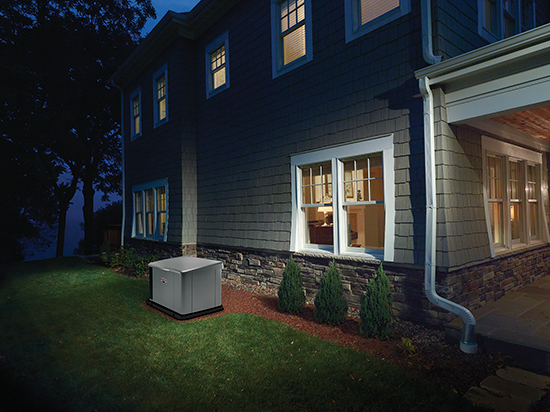Prepare early for power outages and other storm impacts
(Family Features) Surging spring temperatures can bring volatility that translates into major weather events. The 2020 storm season could see above-average probability for major hurricanes hitting the United States coastline and the Caribbean, according to the annual Colorado State Tropical Meteorology Forecast.
As those in the paths of seasonal storms know, property damage and power outages come with the territory. Being prepared for weather disasters and power outages is critical to protecting property, productivity and well-being.
Assess external threats. Before storm season arrives, take inventory of potential problems outdoors that could be exacerbated by bad weather. For example, trees may need trimming if limbs threaten power lines, the house or other structures on your property. Also examine the house for necessary repairs, such as loose guttering, shutters or shingles that may need to be secured and torn screens, all of which can worsen in heavy weather and cause more damage.
Another consideration is items that could topple in heavy winds, such as barbecue grills or lawn furniture. When possible, look for ways to secure these items so they don’t take flight, aren’t destroyed or cause additional damage.
Assemble emergency resources. An overnight storm is no time to discover your flashlight batteries are dead or you don’t have the right size batteries to replace them. Making time to update your stash of storm supplies before weather hits can save some frustration and help ensure you’re prepared to safely wait out the storm.
In addition to replacing flashlight batteries and checking that they’re in good working order, if you don’t have a light source in every room it’s a good plan to place flashlights or lanterns in rooms where you may need to be able to see in an emergency. The idea is to give everyone in the family the ability to illuminate their path and move safely through the house no matter where they are when the lights go out.
Part of your preparation should also include restocking your first-aid kit. Some items in the kit, like ointments and medications, can expire so you’ll need to replenish anything you’ve used and double-check that the contents are still safe to use. If you don’t already have them, be sure to add a battery-operated radio and a portable power bank so you have access to news updates and can charge a low phone battery.
Take inventory of your non-perishable food items to ensure you have plenty of options on hand in the event power stays off through one or more meals. You may also want to stockpile some books and board games for convenient access to entertainment while your power is down.
Make power plans. Because power outages area near certainty during severe weather season, reliable electricity is a necessity for powering work, school and daily life. An appropriately sized standby generator can ensure your home power doesn’t miss a beat when faced with seasonal storms. Because standby generators are fueled by natural gas or liquid propane, the tank doesn’t require regular refueling with gasoline which means no last-minute trips to the gas station when your generator runs out of gas.
“Standby generators can power an entire home, and because they are wired to the home’s electrical system so there is minimal interruption,” said Brian Northway, Briggs & Stratton field service manager. “When a storm knocks out power, the generator automatically takes over to deliver power, allowing you to take care of family and accomplish what you need to rather than worry about the power outage.”
Generators with a smart power management system, such as the line of units offered by Briggs & Stratton, can help manage high-wattage appliance priority. These power management technologies allow a homeowner to prioritize the power they need during an outage at a lower upfront acquisition cost.

How Big of a Generator Do You Need?
It can be easiest to determine which type of home standby generator system is right for your household by first thinking about what items your family needs to remain functioning normally during a power outage. The number of home appliances or electrical loads you want to power will determine the size and cost of the generator.
There are generally three different types of standby generators, which vary based on how much your home needs to power:
Select Circuit Home Generators: Power Essential Appliances
A select-circuit generator system is a cost-effective way to power your home’s basics to get you comfortably through a power outage. These units can power up to 10 electrical loads in your home, including the fridge, some lights, television and the microwave.
Managed Whole-House Power Generators: Smaller, More Power
A standby generator equipped with a smart power management solution gives your family the benefits of whole-house power with a smaller, more affordable generator system. These home generator systems can power all your electrical needs, including up to two
air conditioners.
Whole-House Generators: Maximum Backup Power Needs
Whole-house standby generator options are typically used as backup power solutions for extra-large and luxury homes. They power an array of high-wattage appliances, from double ovens to hot tubs with commercial-grade performance.
Learn more about standby power options at powernow.com







